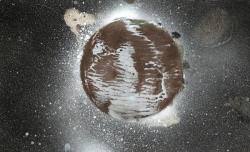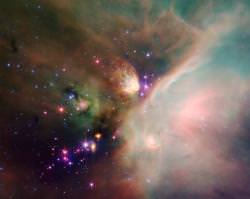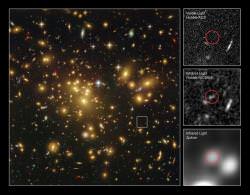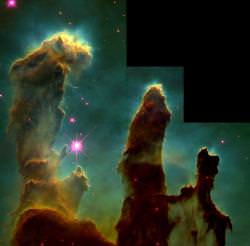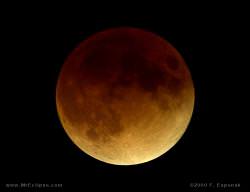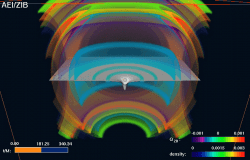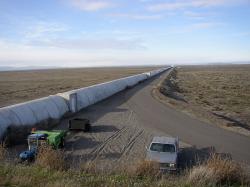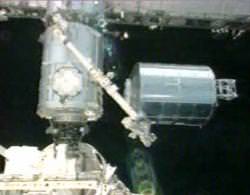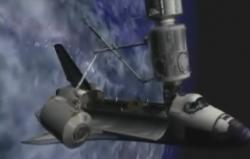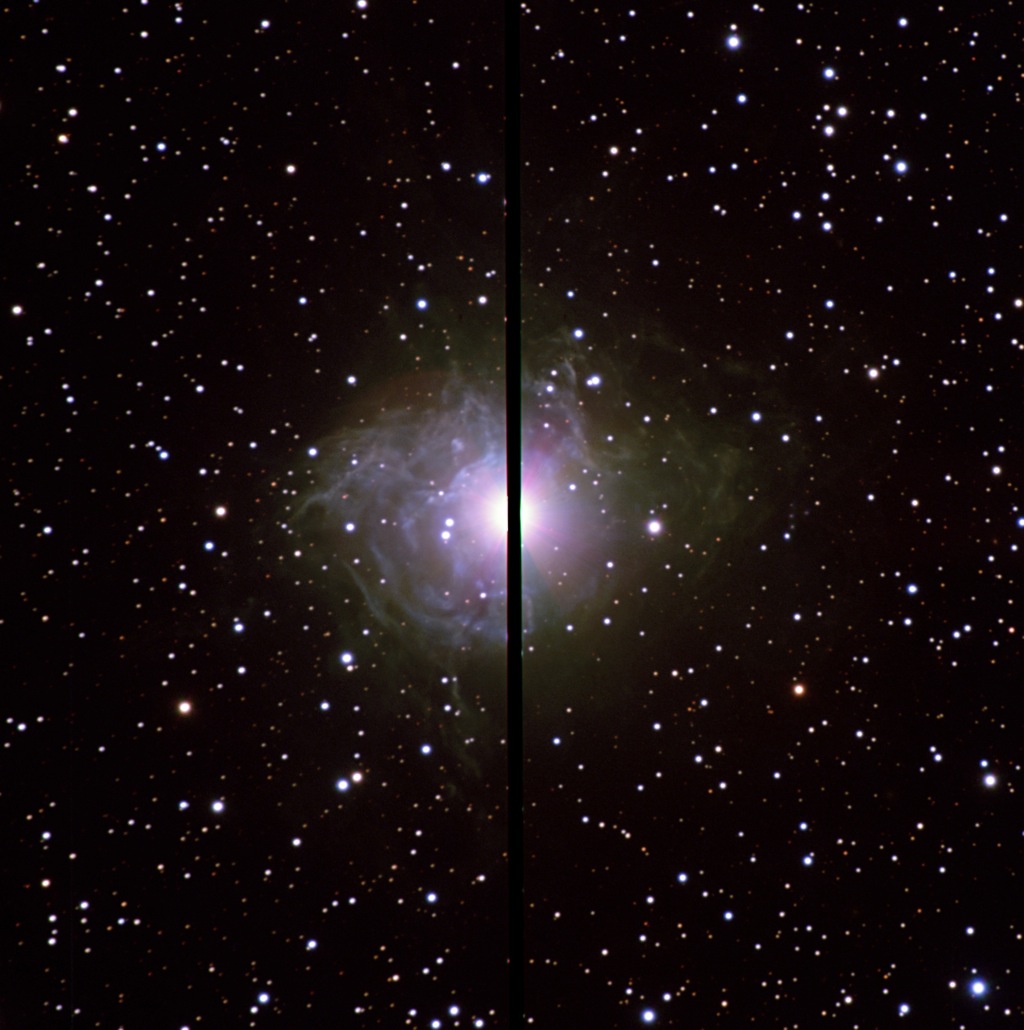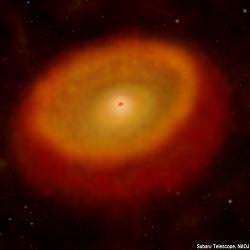A total eclipse of the Moon occurs during the night of Wednesday, February 20/21, 2008. But where will the action be? For viewers in South America and most of North American the entire event will be visible on the evening of February 20. For Western Europe, Africa, and western Asia, your opportunity to view the action will happen on the morning of February 21. During a total lunar eclipse, the Moon’s appearance can range from bright orange to blood red to dark brown and (rarely) very dark gray. What can we expect this time?
Making predictions about a total lunar eclipse’s appearance is based on understanding what makes it happen. During a lunar eclipse, the Earth passes between the Sun and the Moon, blocking the Sun’s light. We see the Earth’s shadow creep across the surface of the Moon. This shadow is made up of two cone-shaped parts, one nested inside the other. Earth’s outer shadow – the penumbra – is a zone where our world blocks some (but not all) of the Sun’s rays. The inner shadow cone – or umbra – is the region where all light is blocked. Logically it would seem like we’d see a lunar eclipse each time the Sun and Moon are at opposition… But why don’t we see one every lunar cycle?
The Moon’s orbital path around our Earth is tilted at about 5 degree angle to Earth’s orbit around the Sun. In other words, most of the time the Moon is just a little over, or a little under the plane of Earth’s orbit. Just like clockwork, our Earth is also orbiting the Sun and Earth’s shadow cones are located on exactly in the same plane. All we have to do is wait for them to intersect! How often does that occur? If we were to take a look at a 5,000 year span, we’d see there are 7,718 eclipse occurrences – both total and partial – with an average of one to two per year… or as many as 3! Watching this year’s February 20/21 eclipse is important because it will be the last totality event until December, 2010.
Now that we understand what makes it happen, let’s take a look at the reasons why a lunar eclipse can appear as so many colors. While every lunar eclipse appearance is different, the physics that govern them is the same. If our Earth didn’t have an atmosphere to bend the sunlight back towards the Moon, it would always become invisible during the umbral, or total phase of an eclipse. Suspended in our atmosphere is dust – one of the major reasons for eclipse coloration. The less dust, the lighter the colors. Heavy dust in our atmosphere causes not only spectacular sunrises and sunsets, but deep eclipses as well. As you enjoy the eclipse, think of what is really causing the incredible colors and subtle tones you’ll see… The combined effect of all the simultaneous sunrises and sunsets on Earth projected onto the Moon!
Lunar eclipses are particularly fun because they don’t require any special equipment to observe. However, if you use a pair of binoculars you can magnify the view and see the shadows race across the Moon’s surface. This eclipse will also a very good time for amateur astronomers to make great scientific observations as well! For visual observers, using the Danjon Brightness Scale for lunar eclipses, amateurs can categorize the Moon’s color and brightness during totality. It’s easy! Just remember these values:
- L = 0 Very dark eclipse, where the Moon is almost invisible, especially at mid-totality.
- L = 1 Dark Eclipse, gray or brownish in coloration and details on the surface are hard to see.
- L = 2 Deep red or rust-colored eclipse with a very dark central shadow, while the outer edge of umbra is relatively bright.
- L = 3 Brick-red colors and the umbral shadow usually has a bright or yellow rim.
- L = 4 Very bright copper-red or orange eclipse where the umbral shadow has a bluish, very bright rim.
If you have a telescope, you can do even more! By watching major craters, you can measure the exact time when each crater enters and leaves the umbral shadow and the timings can be used to estimate the enlargement of Earth’s atmosphere due to airborne dust and volcanic ash. These results can then be submitted to Dr. Richard Keen.
For now? It’s time to get ready… Because even more surprises are in store for this eclipse!

